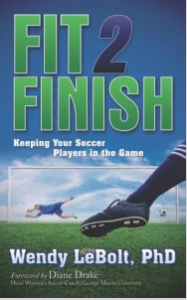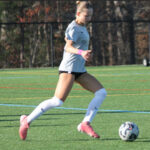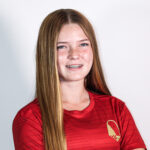Fit2Finish: Why kids’ bodies require special care and attention to stay healthy
Editor’s Note: The following excerpts are from Dr. Wendy LeBolt’s book Fit2Finish: Keeping Your Soccer Players in the Game. Learn about the book and find more resources here.
We’re all athletes, because we all have a body. But kid-bodies are different from adult-bodies so we need to treat them and train them differently. In order to understand why, we have to know a bit about the body. The main difference is…spoiler alert…kids are growing. And anything in transition is fragile, so we need to treat it gently.
What’s so different about the growing body? Here are 6 ways that kids need special care and handling:
1. BONES
Bones are alive. Most people are surprised to hear this. Each bone is an active organ made up of an intricate arrangement of fibers, cells and spaces, complete with blood vessels that supply nutrients and remove waste from cells that lay down new bone and take away the old. This is how growth, repair and remodeling take place. This happens your whole life long, but it’s particularly pronounced in kids.
Because of the soft nature of the new bone, growth plates are quite susceptible to injury. Damage or displacement in the growth plate region can be particularly dangerous for a young person. Athletes with injured growth plates, left untreated, or those who are poorly treated, risk permanent impairment. The wise coach treats even the risk of any such injury with this firmly in mind.
Skeletal growth and change is quite dynamic, especially during certain periods known as growth spurts. Active growth requires plentiful building materials, so a healthy diet with sufficient protein, vitamins and minerals is essential. Keep in mind that, while healthy bodies build strong bones, undernourished bodies run the risk of having weaker, more brittle bones. Even kids who eat plenty of calories may be undernourished if their foods are not nutrient-dense. It’s where “you are what you eat” rings very true. Weight-bearing exercise that stimulates bone formation in all the right places calls on this nourishment to build healthy athletes.
 2. JOINTS
2. JOINTS
Without joints we couldn’t move. Movement happens when a muscle that spans a joint contracts with enough force to pull one bone toward another. Joints come in different varieties and may be grouped into the kinds of motion they allow. Two main categories are hinge joints (that allow bending like the hinge of a door like knees and elbows) ball and socket joints (that allow a larger range of motion, like shoulders and hips).
Young children usually have full range of motion at all their joints and don’t require extra flexibility training, although teaching them proper stretching techniques early sets them on course to address the tightness that may come later. (Caution: children with range of motion well beyond normal may require extra strengthening to protect those joints.)
When kids begin their growth spurt, they “suddenly” become “inflexible.” This is because their bones grow longer more quickly than their muscles can stretch to keep up across the joints. Growing kids need additional time stretching and require more patience in this phase.
3. MUSCLES
Muscles are the engine which allows us to move. Skeletal muscles have a magical design and complex organization so precise that, through regular exacting practice, can be trained to execute the most detailed maneuvers or the largest, most spectacular feats.
In large body movements muscles act in muscle groups rather than individually. A team of muscles has assigned responsibilities, grouped according to their contribution in a particular motion. Prime movers supply the force. Agonists and/or synergists add force. Antagonists control the force. Stabilizers, the unsung heroes, support hard-working joints, to prevent unwanted movement or to hold the non-moving parts in place.
Obviously, a simple motion is not really so simple. We need to remember that kids’ muscles are in training. They are learning to “play nicely together.”
 4. CORE STRENGTH
4. CORE STRENGTH
Core strengthening is essential because, without it, all this movement would be useless. We need a core that is stabilized against which to pull. For kids, I explain it this way:
“You’re getting ready to jump from the dock into the lake. What would happen if the dock were unsecured? The dock would slip backward as you lifted off and you would land with a splat. Hopefully there would be no injuries. If the dock is stabilized, you launch a perfect cannon ball.”
In other words, for arms and legs to move, your center has to be strong. Stabilizing muscles in the abdomen, chest, back and shoulders secures the dock. Kids’ newly longer limbs are particularly thankful for a solid attachment.
5. KIDS HAVE A MOTOR-MORON PHASE
Kids can be perfectly coordinated one day and completely inept the next. This motor moronism is a natural part of growth and development. If it’s hard to watch, imagine how hard it is to feel! Kids grow accustomed to their bodies and then a growth spurt sends them into a tailspin. Their brains don’t know where their bodies are, and it takes time for the two to be re-united.
This will resolve with time, patience and careful practice. Practice reinforces the neuromuscular pathways from the brain to the muscles and back. This is what is known as muscle memory. There’s a lot of re-learning going on.
Getting lots of ball touches and patiently repeating a skill many times adds to this memory. We can see this “memorizing” process take place in our junior soccer players as they begin to get their first touches on the ball. Where are their eyes? Glued to the ball. When they start to “feel” the ball they gain confidence to direct their eyes elsewhere.
6. HEART
While the heart and bloodstream are really just the supply system, they are typically what coaches target for “training” for fitness. But in fragile, growing and developing athletes, we’d all do better to start with 1-5: bones, joints, muscles, core strength and motor coordination.
They may be young and resilient, but they’re not indestructible. Indestructibility comes from the inside. Strong bones, muscles, joints, core and connections make fitness a breeze.
Hey, we’re all athletes, because we’re born with a body. It’s a life sentence.
SOCCERWIRE MARKETPLACE
- Start the Season Strong at Loudoun Premier Cup!
- 50th Annual Rael Vodicka Memorial Tournament
- Soccer Marketing Internships at The St. James FC
- Job Opening: The St. James FC Goalkeeper Academy Coach
- Full-Time Director of Goalkeeping for The St. James FC
- visitRaleigh.com Showcase Series 2025, hosted by NCFC Youth
- Join Official Elite Summer Soccer Camps with Europe’s Top Pro Clubs!
- OFFICIAL BAYERN MUNICH SUMMER CAMPS U.S.
- OFFICIAL FC BARCELONA CAMPS U.S.
- The Cup San Diego - Hosted by Legends FC












